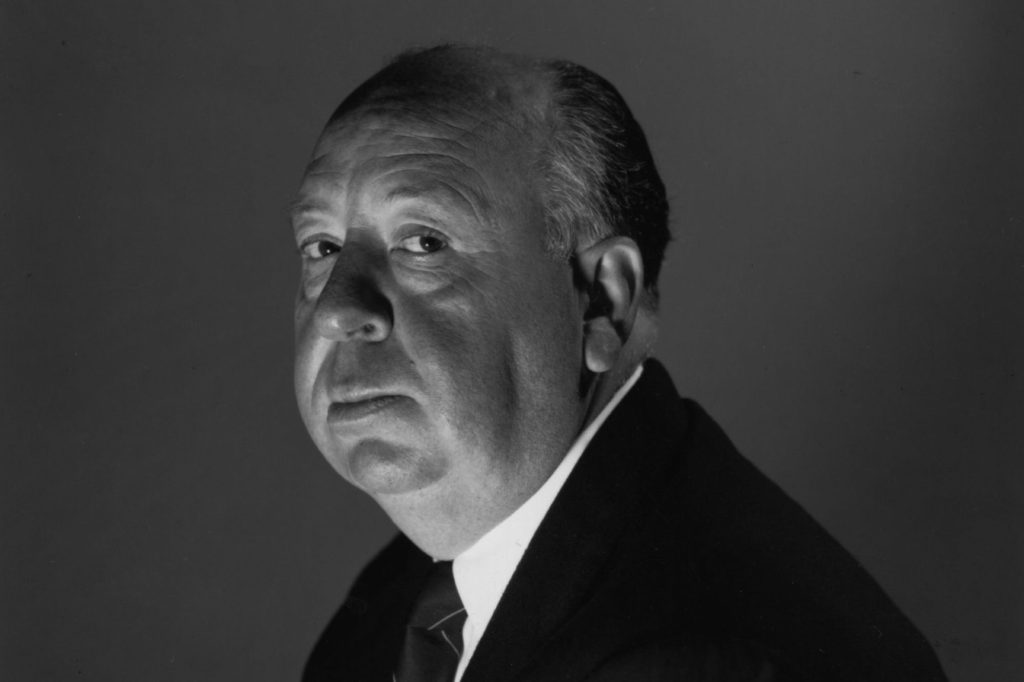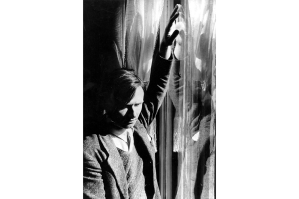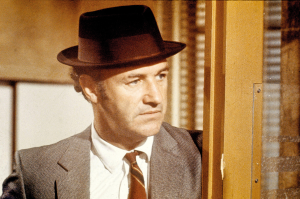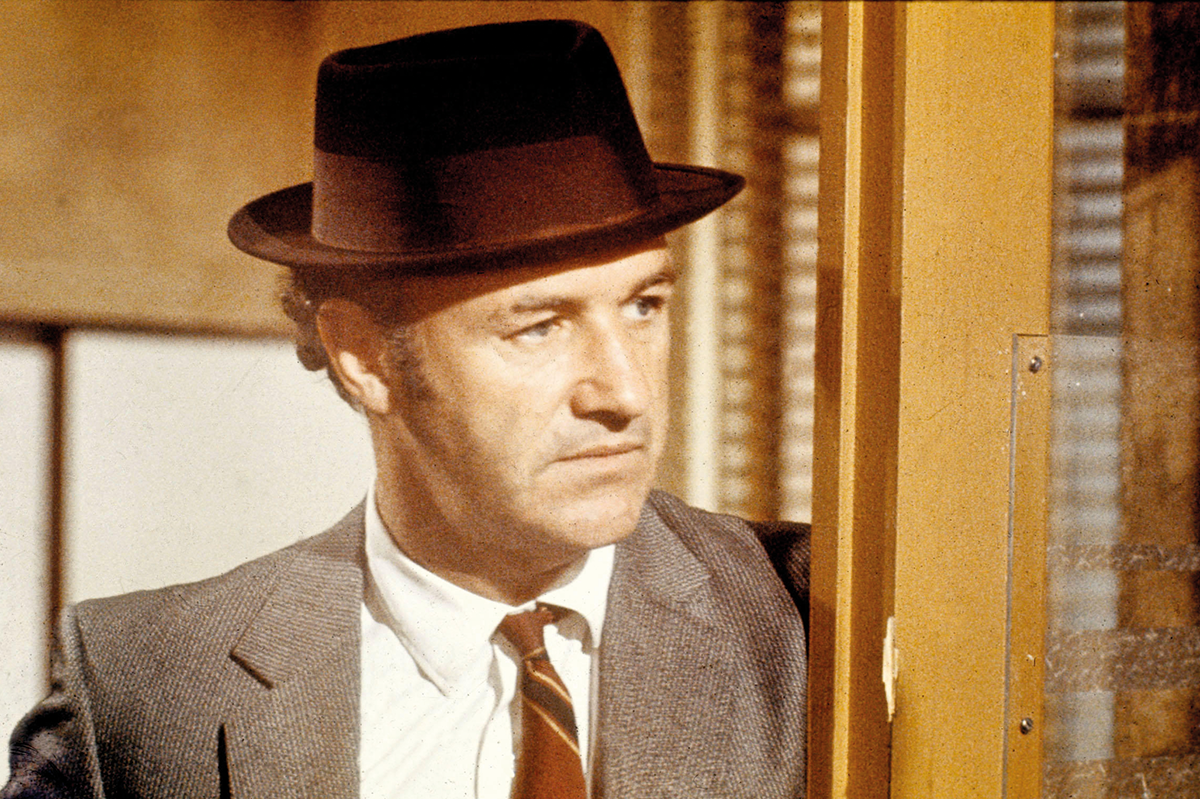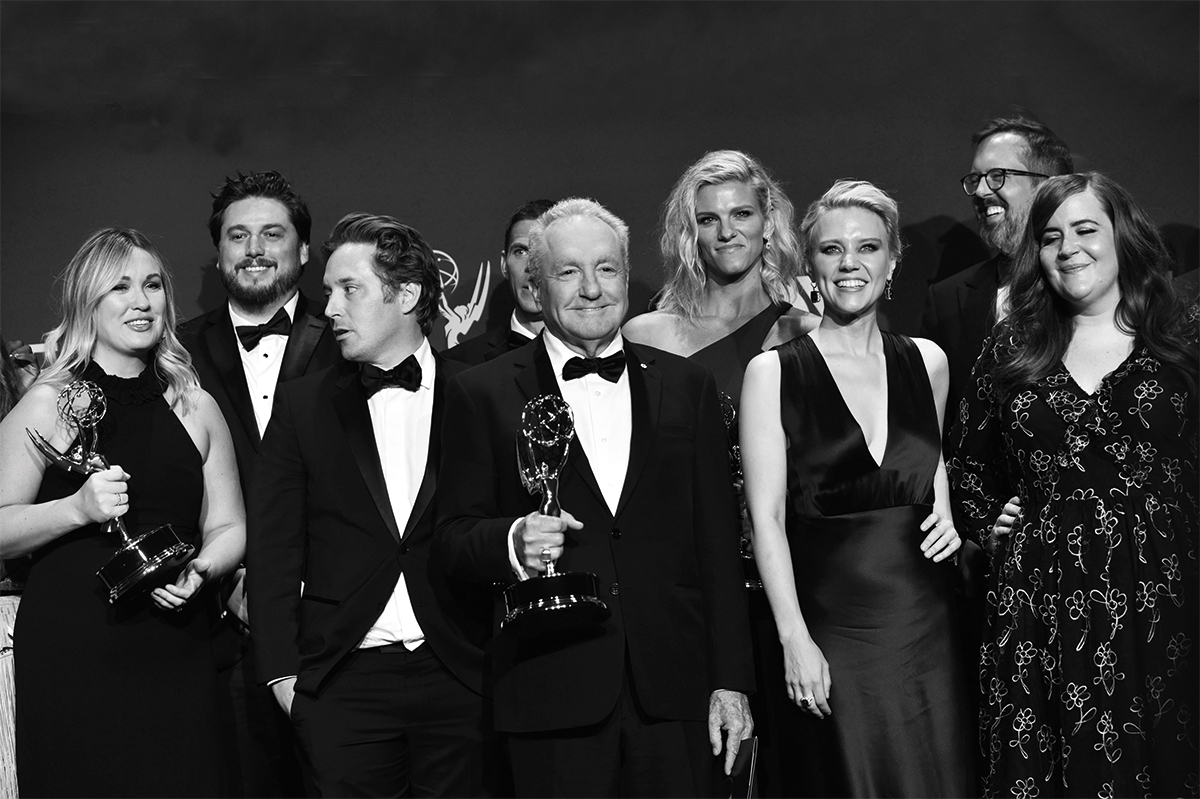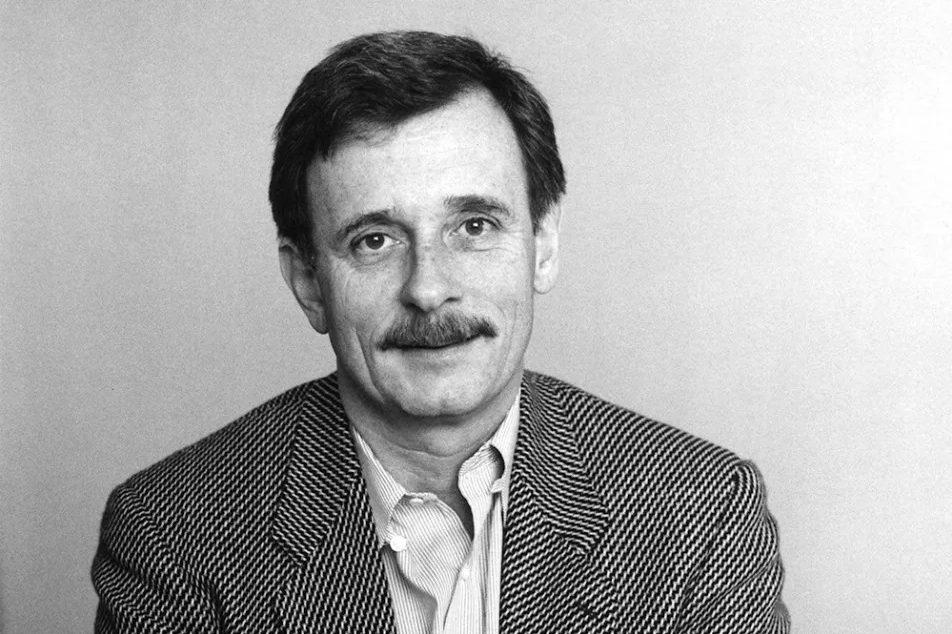In an age of rancor, one thing we can all agree on is that it makes a certain amount of sense to fear the police. What other force in civil society is authorized to intrude on private life, and deny its benefits and freedoms, in quite the same way? It may be the law-abiding members of society who fear the police most palpably. While actual criminals carry knowledge of their own guilt, the innocent must live with the knowledge of how easily we could be wrongly accused, misidentified or railroaded.
Alfred Hitchcock did more than any other popular artist in the last century to help form a certain image of the police in the public consciousness. From The 39 Steps to Saboteur to North by Northwest, Hitchcock was perpetually drawn to the drama of the innocent man mistakenly stalked, hounded or pursued by law enforcement. Arguably his best-remembered film, Psycho, is chock-full of terrifying sights, but is any of them as alarming as the giant close-up of a police officer, his eyes obscured by sunglasses and his mouth stubbornly unsmiling, looming outside the car of a sleeping Marion Crane (Janet Leigh)? Of course, Marion is guilty of a little larceny, but Hitchcock understood that audiences will invariably recognize themselves rather than the pursuer.
In the underrated The Wrong Man, Hitchcock even applied his gifts for drama and imagery to the real-life case of an innocent man whose life was upended by a false accusation. Manny Balastrero (Henry Fonda) is an earnest, amiable fellow — a family man, wage-earning bassist and devout Catholic — who, by sheer happenstance, is taken for a thief and made to stand trial. No metaphysician, Hitchcock is concerned less with the cosmic injustice of the affair than on its specific unseemly details: the way the cops, at once too cold and too friendly, repeatedly call the accused by his first name and tell him to take off his hat as he is being booked. For Hitchcock (1899-1980), fear of the police was an article of faith. In a 1969 appearance at the National Film Theatre in London, the director was asked what scares him most. ‘Policemen frighten me’, Hitchcock said flatly. Playing to the audience, his interlocutor interjected, ‘Not English policemen, surely?’, to which Hitchcock replied, ‘Oh, the worst — because they are so polite’.
This was a personal matter for Hitchcock, who, as a misbehaving tot, had been told to march to the police station bearing a note from his father, a greengrocer named William. ‘The chief of police read it and locked me in a cell for five or 10 minutes, saying, “This is what we do to naughty boys”,’ Hitchcock recalled to fellow director François Truffaut in their interview book Hitchcock/Truffaut.
Fear — of the police and much else — functioned as an accelerant for much of Hitchcock’s work, Edward White argues in this fascinating, largely persuasive new study that looks at the director prismatically. As Shakespeare offered the ‘seven ages of man’, White gives us ‘the twelve lives of Hitchcock’, an examination of the discrete sides to the film icon that combined to make up his personality off-screen and persona on screen.
‘This is about the life Hitchcock lived, but also the various roles he performed and inhabited’, White writes in introducing a book whose chapter titles include ‘The Murderer’, ‘The Fat Man’ and ‘The Voyeur’. This approach risks being reductive, but since so much ink has already been spilled on Hitchcock — from Robin Wood’s brilliant critical study Hitchcock’s Films Revisited to Patrick McGilligan’s definitive biography Alfred Hitchcock: A Life in Darkness and Light — White has the advantage of divvying up the old information in a genuinely fresh manner. Focusing, as White does, on particular aspects of Hitchcock’s character for long stretches — his showman ship; his question-able but finally earnest Catholicism — turns out to be clarifying. In the opening chapter, ‘The Boy Who Couldn’t Grow Up’, White persuasively links Hitchcock’s mature interest in inducing fright with his own youthful neuroses growing up in London as the last of three children born to William and his wife, Emma. ‘His most vivid memories — or, at least, the ones he publicly declared — were concerned with fear, the fuel on which the Hitchcock juggernaut ran’, writes White, who admirably attempts to reconcile versions of the jail cell story that Hitchcock relished telling time and again. ‘He claimed to be scared of just about everything: policemen, strangers, driving, solitude, crowds, heights, water, and conflict of any sort, all caused him excessive vexation’.
Hitchcock carried with him not just the hang-ups of childhood but also literary and dramatic preferences formed during those early years. He was so affected by a performance of J.M. Barrie’s play Mary Rose at the Haymarket Theatre in 1920 that he endeavored for years to bring the play to the screen.
Even more significant was Hitchcock’s fervor for crime fiction:
‘Along with Barrie, Hitchcock named the spy novelist John Buchan and a gamut of middlebrow English authors as the great cultural influences of his youth, as well as Edgar Allan Poe, whom Hitchcock discovered as a 16-year-old when he read his biography.’
Hitchcock cultivated youthful audiences through a fan club and series of children’s books published under the banner of Alfred Hitchcock and the Three Investigators, but he was far from misty eyed when it came to portraying actual children onscreen. Witness the bratty youngsters who become kidnapping victims in the two versions of The Man Who Knew Too Much.
No major director was as yoked to a single genre as Hitchcock was to the elegant, stylish thriller. As White tells it, this was more a matter of cultural inheritance than conscious choice:
‘Hitchcock believed that not only were the English — whom he often conflated with the British — powerfully drawn to murder, the nature of English violence was a locus of national identity and experience.’
Taking stock of the methods of murder present in Hitchcock’s films, White, who knows his stuff, mentions the relative scarcity of firearms in Hitchcock’s films. Hitchcock, showing a typically English preference, regarded ‘amateur gentleman murderers’ as more compelling than ‘professional killers’.
Testing the outer limits of the thriller form, Hitchcock created ample room for personal, creative expression. White recognizes, as did Hitchcock, that plots were merely the instruments of his artistry: ‘The real essence of Hitchcock, the field in which the auteur made his mark, was, he suggested, his inimitable eye’. Hitchcock basked in the adulation of the French critic-directors including Truffaut, Eric Rohmer and Claude Chabrol: ‘Perplexed as he may have been by some of the auteurist theories, Hitchcock agreed with the fundamental precept that behind each great film sat a great man in a canvas chair.’ White details the contributions of Hitchcock’s collaborators, who Hitchcock could treat rather shabbily, and ultimately seems to agree himself: ‘During his peak years between the mid-1940s and the early 1960s, Hitchcock was irrefutably the heliotropic force on any Hitchcock project, the source of its energy and the light to which all things grew’.
Indeed, White implicitly endorses the auteurist reading of Hitchcock by writing of various pathologies of the director that ultimately wormed their way into his work, including his purported lack of experience in romantic matters. (His sole marriage, to screenwriter and right-hand-gal Alma Reville, produced a single daughter, actress Patricia Hitchcock). For White, Hitchcock’s personal puzzlement about women is betrayed in his much-noted preference for casting icily pretty, emotionally remote actresses like Madeleine Carroll, Grace Kelly and Ingrid Bergman: ‘Aloof, decorous, and passion lesson the surface, but quivering with hidden passions — Hitchcock could’ve been talking about himself’. Sometimes White strains credulity, as when he writes that Hitchcock’s control over his actors’ movements stands in contrast to his own failure to manage his weight (his talent in using his silhouette for publicity purposes notwithstanding).
Towards the end of his career, Hitchcock became antsy to range beyond straight-up thrillers. He bemoaned that he couldn’t make a film about Cinderella because ‘people will immediately start looking for the corpse’. In the trailer for the dazzling, highly uncharacteristic film Marnie, Hitchcock lamely tried to connect that film’s sincere interest in psychological confusion with his tried-and-true genre by calling it a ‘sex mystery’.
In fact, Marnie, starring Tippi Hedren as a traumatized kleptomaniac, has a good deal of sex, a few thrills but loads of cinematic style — including, arguably, the single most expressive shot in his filmography: a long, twisting crane shot of Hedren typing at work while surreptitiously planning her next bit of thievery. In a chapter entitled ‘The Dandy’, White writes appreciatively of Hitchcock’s aesthetic sense, which informed not just the beautiful shots and décor in his movies but his own bespoke wardrobe, featuring subtle variations of his signature dark suit: ‘Hitchcock was rarely happier than when dressing his female stars.’
Following an ugly breakup with Hedren (including an ambiguous encounter that the actress now says constituted sexual assault) and back-to-back films that suffered either from misjudged casting (Paul Newman and Julie Andrews in Torn Curtain) or poor choice in material (the pointlessly convoluted spy thriller Topaz), Hitchcock returned to first principles for his penultimate film, Frenzy. One of his best, Frenzy tells of a luck-less bartender (Jon Finch) whose manifold sins do not include, as Scotland Yard would have it, being the much sought-after ‘neck tie strangler’. In brilliantly balancing the comic and the grotesque, the film proved once and for all that its maker was the right man to show what it’s like to be the wrong man.
This article was originally published in The Spectator’s April 2021 US edition.



